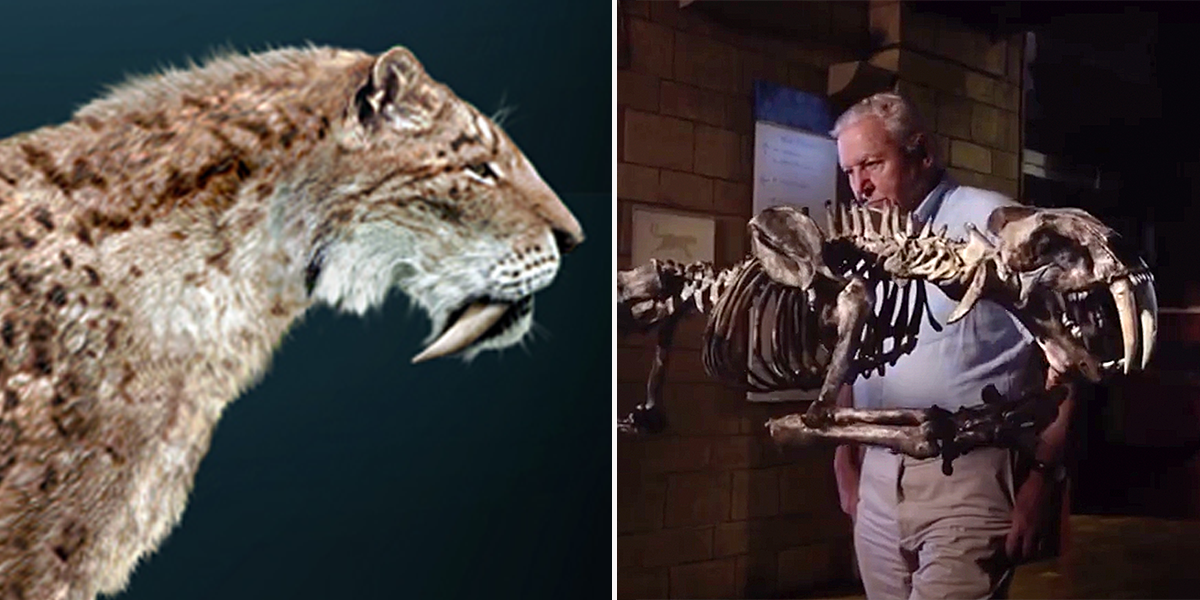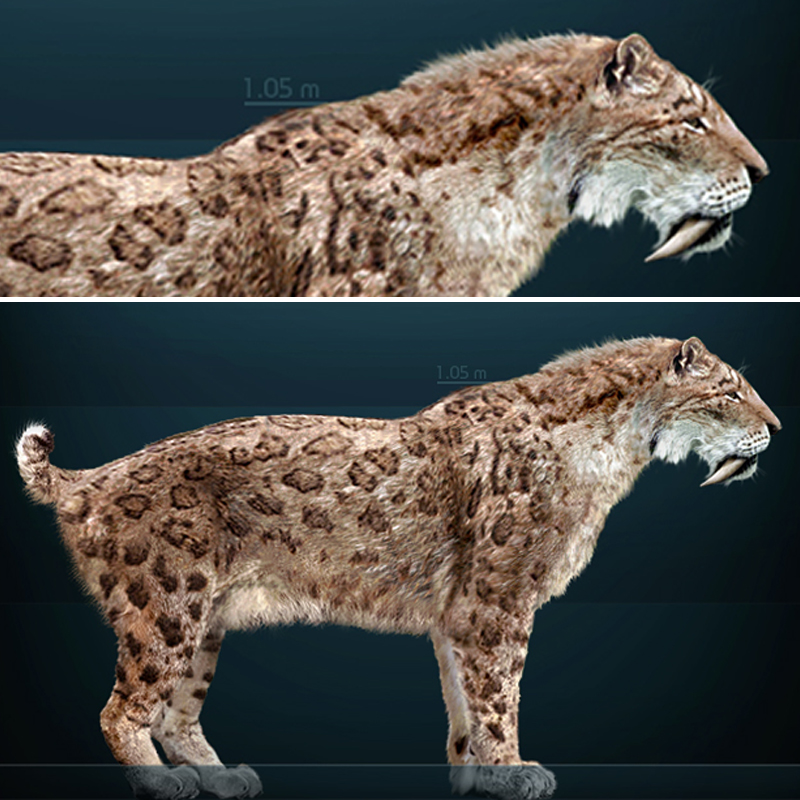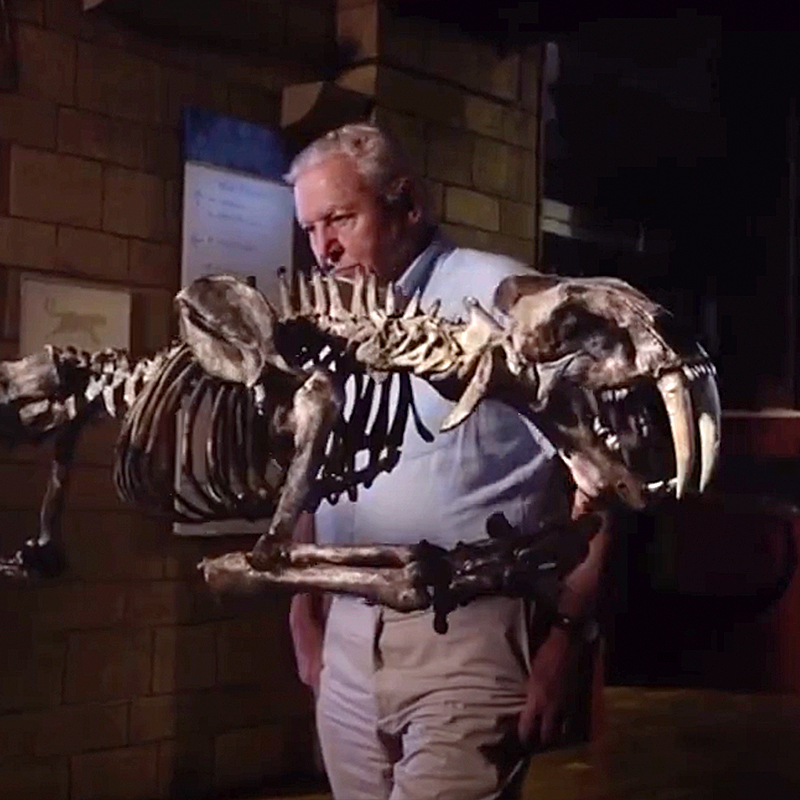If you were a Native American about 10,000 years ago, you may have seen one of the most fearsome big cats to have walked the planet. Saber toothed cats, or Smilodon fatalis, may have taken down prey the size of pickup trucks, including massive ground sloths reaching 2,000 pounds.
Yet it’s how they likely hunted that’s even scarier, stalking silently and then ambushing. They suddenly leaped out to strike a deadly blow with their horrifying banana-sized fangs. At least it was probably all over fast if you ended up on the menu? Especially given that these creatures may have hunted in packs!
Finding any evidence of Smilodon is rare today. But a Mississippi man recently turned up more evidence of these incredible apex predators. No, they weren’t actually tigers, but the name ‘Saber-tooth Tiger’ is still what people associate them with. Oh well, Marmalade still thinks he’s a tiger, too!
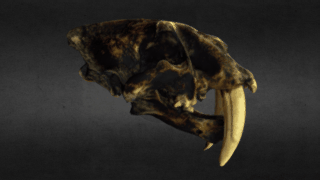
Gif of Sabre-Tooth via Wikimedia Commons
Smilodon Bone Found in Yazoo County, Mississippi
Just north of Jackson in Yazoo County, avocational archaeologist Eddie Templeton was hunting for fossils when he made the incredible discovery. He found a crystallized toe bone belonging to a Smilodon. At the time, he wasn’t sure what it was, but he knew it came from the Ice Age or Pleistocene.
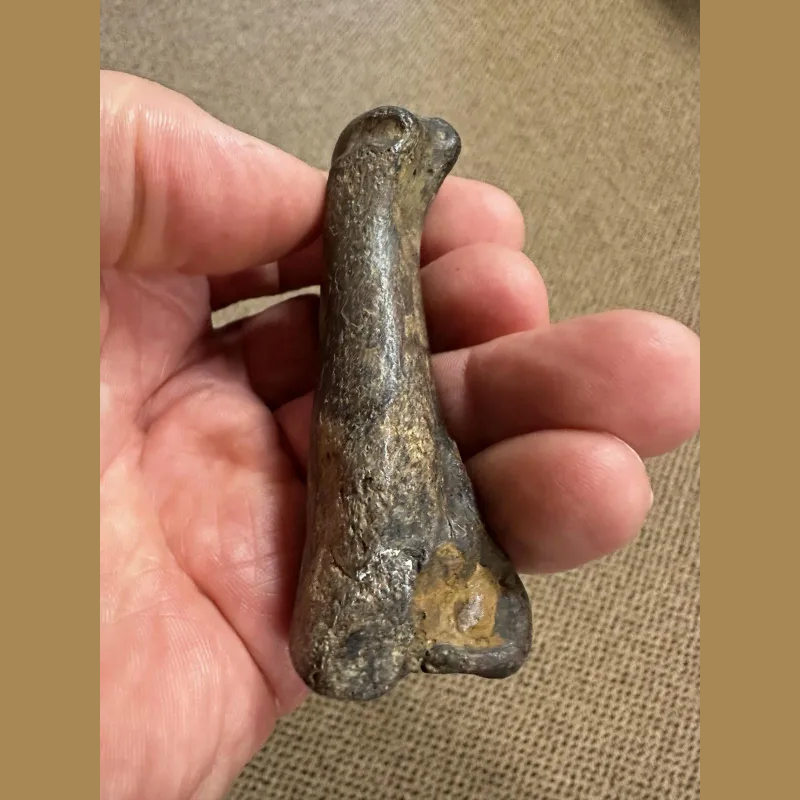
Smilodon, Saber tooth cat toe bone found by Eddie Templeton via The Clarion Ledger
The bone may not have looked like much to the average observer. And it makes you wonder how many times people may have discarded such a find, not realizing it belonged to a Saber-tooth cat! Now, it might join the collection of only six fossils of the big cat in the Mississippi Museum of Natural Science.

Smilodon fatalis via Wikimedia Commons
The fossil toe is far from scary. But for Native Americans, and everything that moved, for that matter, they always had to be on their toes with these predators about.
“These were things that the first Native Americans that came to Mississippi would have encountered,” said James Starnes of the Mississippi Department of Environmental Quality’s Office of Geology. “There was a bounty of meat for the Native Americans, but there was danger, too,” he told the Clarion Ledger.
Chart via Wikimedia Commons (with translation by Google)
Starnes says the Smilodon wouldn’t have had any problem taking down any kind of prey in ancient Mississippi. Their canines were over 10 inches long, half of which was embedded in their skulls.
“Even over the American lion, they had crazy agility. They would not have had any trouble chasing down anything they wanted to eat, including humans. These animals roamed throughout the state,” he continued.
Smilodon fatalis via Wikimedia Commons
Even so, humans and climate change at the end of the Ice Age may have ultimately driven them all to extinction.
Mississippi Museum of Natural Science
The Mississippi Museum of Natural Science features an impressive saber-tooth cat replica. Nearby, it’s dwarfed by the giant ground sloth replica, which could be 12 feet tall and 2,000 pounds. In 2023, sloth bones were found in a river in Northeast Mississippi.
In recent years, they have also found the first horned dinosaur tooth in Mississippi, which most would associate with Triceratops.
Despite the size difference, the sloths created burrows underground to avoid the horrifying Smilodons. Yet these big cats could be outmatched in close-quarter combat with other apex predators, of which there were many! Although scary looking, those huge canines probably weren’t as effective for brawling with packs of American lions or Dire wolves.
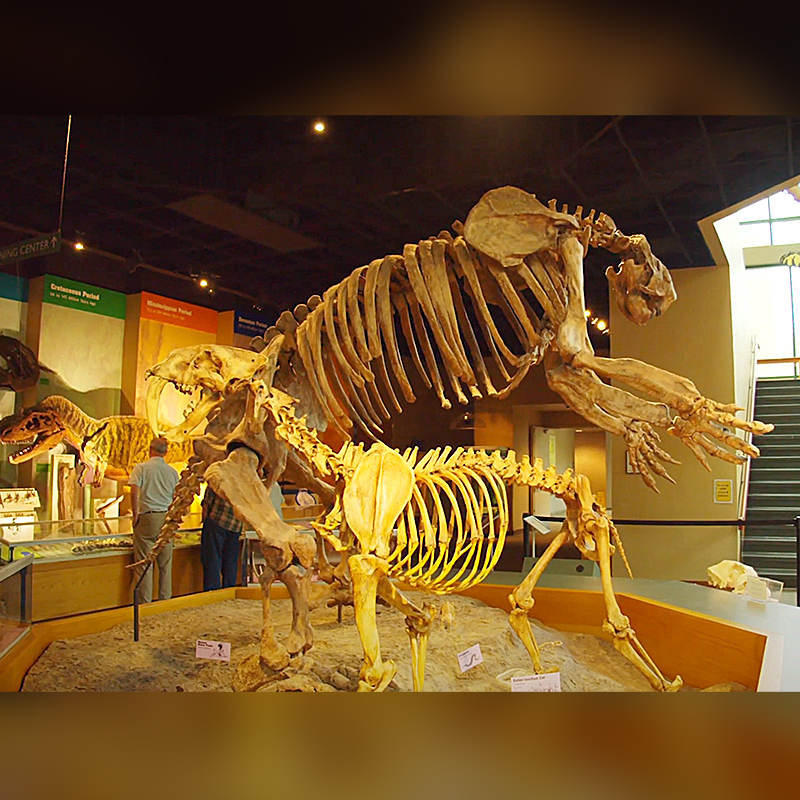
Replicas at the Mississippi Natural History Museum. Image screenshot via YouTube/Mississippi Outdoors
The Most Alarming Animal for Attenborough
When David Attenborough visited the Natural History Museum, he said, “For me, there is no more alarming animal in the whole museum than this,” at seeing a Smilodon skeleton.
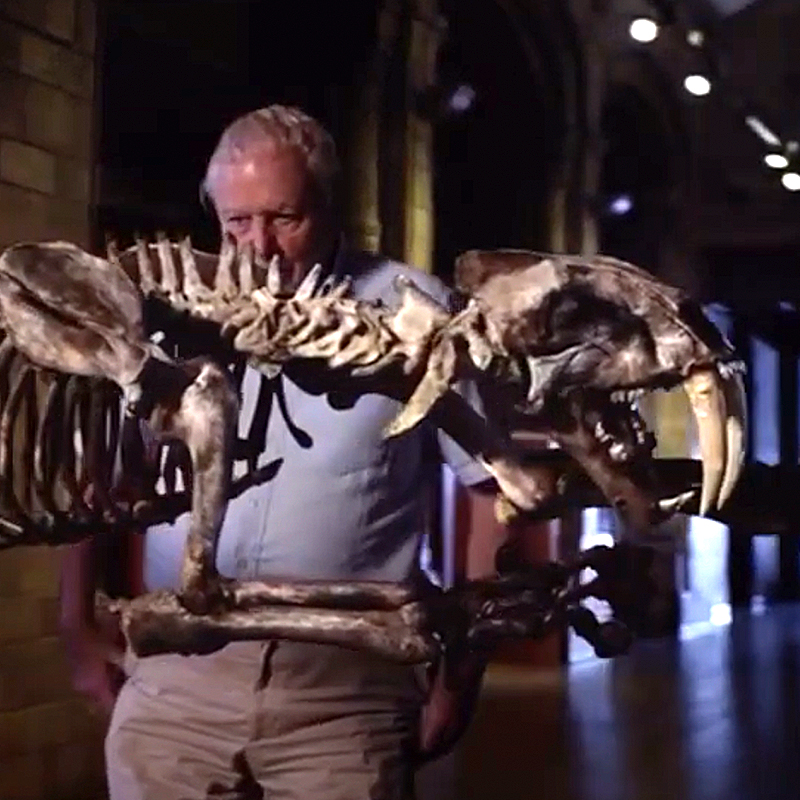
David Attenborough with a Smilodon skeleton via YouTube
As he pointed out, there’s evidence that Smilodons might have lived in packs and allowed the elders to share in the kills. Think about a whole pack of them lurking in the shadows! Shudder!
Video by Smilodon:


